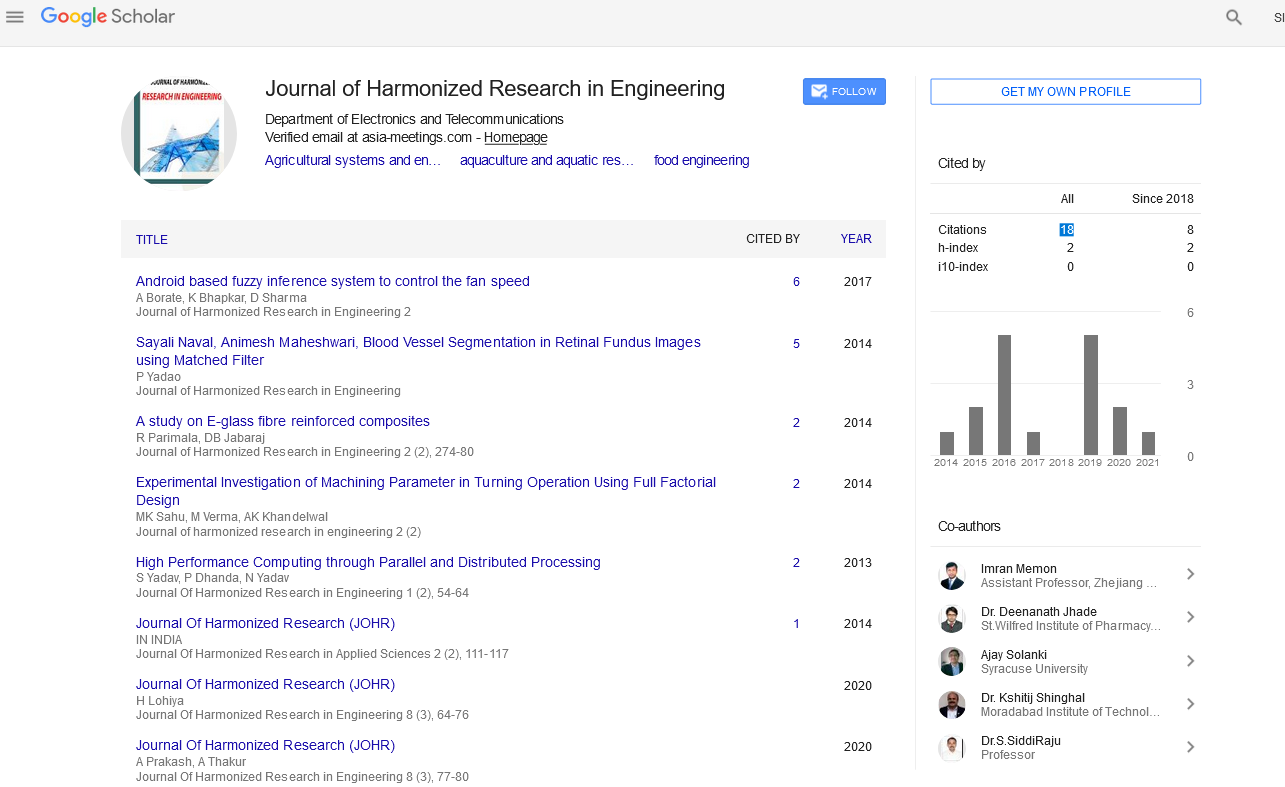Commentary - (2022) Volume 10, Issue 1
ADVANCING TOWARDS FLIPPER-PROPELLED ROBOT (U-CAT) IN AQUACULTURE
Dennis Clarke*Received: Mar 02, 2022, Manuscript No. JHRE-22-62062; Editor assigned: Mar 07, 2022, Pre QC No. JHRE-22-62062(PQ); Reviewed: Mar 21, 2022, QC No. JHRE-22-62062; Revised: Mar 28, 2022, Manuscript No. JHRE-22-62062(R); Published: Apr 07, 2022, DOI: 10.30876/2347-7393.22.10.194
Abstract
Description
In world’s population on course to reach 9.7 billion by 2050, the global demand for protein is anticipated to grow by 2040. One way to meet human protein needs is to sustainably maintain both wild fish reserves and farmed fish, but with pressure on the formerly over-exploited wild fish reserves, communities worldwide, including the UN’s Food and Agriculture Organizations are calling for more effective ways to manage both wild fish stocks and the ocean’s natural biodiversity, it is better if people give fish with optimal environmental conditions by reducing stress situations, guarding against parasitic outbreaks and ensuring there’s enough food and developing the technology.
In order to effectively observe fish in their natural state, a technology is wanted which would enable reaching each nook of the fish farm where, for illustration, freighted samples might be hiding, it must be observed whether the feed reaches all the fish or only the more aggressive alpha samples, whether the fish have parasites or any other health problems.
Observing fish in their natural state
Since the robots are physically present, it allows for a controlled variation of predesigned morphologies and movements. Presently, experimental results on how fish are affected by the presence of aquatic robots are largely limited to laboratory surroundings with many individualities and a focus on model species and the platoon of researchers researched that large-scale fishes are responded to robots in the context of practical and aquatic compliances in fish farms, they examined the effects of aquatic robots and a human diver in a large fish aggregation within a Norwegian aquaculture facility with the specific purpose to upgrade the use of aquatic robots for fish compliances. The geste of fish was observed in a semi-natural terrain in a veritably large aggregation in a marketable fish farm ocean cage containing about farmed salmon. Trials were conducted with a small, field-deployable, flipper-propelled robot known as U-CAT.
The study compared the fish’s reaction to U-CAT against standard technologies and practices in aqua farming using a stationary camera, a technical diver and Argus Mini (a marketable thruster-driven aquatic robot). Another thing was to check the design of U-CAT and its operation and make advancements by investigating the fish’s response in response to the locomotion mode and colour.
Unique about U-CAT
U-CAT is a biomimetic aquatic robot that uses a new four- fin actuation to give it high project in complex surroundings with walls, ropes, nets and other obstacles. The use of fins (mimicking a ocean turtle) allows quiet stir relative to traditional propellers. The independent robot can be connected to measuring instruments and detectors to give online updates and monitoring of exertion in the ocean cage.
The general conclusion was that the experimental robot U-CAT permitted observation in an aquarium at close distance (0.5-1.5 m), while conventional compliances methodologies from platforms are significantly more disturbing or don’t permit compliances at all. The researchers observed a significant difference in fish behaviour using the U-CAT robot when compared to a thrusterdriven aquatic robot, Argus Mini, and a mortal diver. Specifically, salmon were more likely to swim near to the U-CAT robot at a lower tail beat frequency, they also observed that fish responses were not significantly different when considering motor noise or when the U-CAT’s colour was changed from yellow to silver.
Other compliances
The exploration provided a practical system to study fishrobot relations which can lead to upgraded aquatic robot designs to give further affordable, scalable and effective results. The aquatic videotape processing workflow to assess fish’s response to aquatic robots was simple and reproducible.
Robot-human relations have been investigated for decades, but animal-robot relations and communication are nearly unexplored noted. Still, these studies are of considerable significance and they will inspire advances in environmental monitoring and agriculture robotization, and will help to make robots facilitating wildlife exploration.

Google Scholar citation report
Citations : 43
Journal of Harmonized Research in Engineering received 43 citations as per google scholar report









